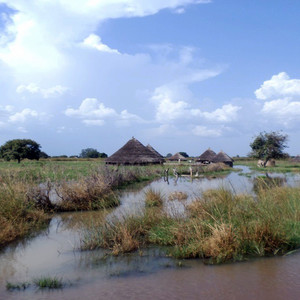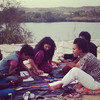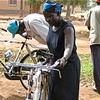Budding Prospects
Farming Tip:
How to grow bananas
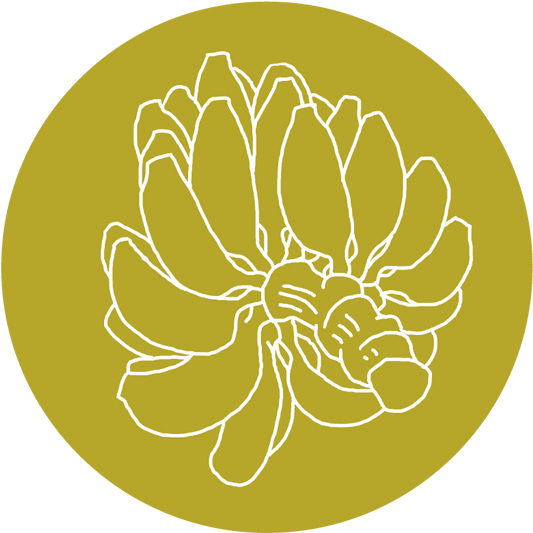
Bananas are fast-growing and low maintenance. You can eat the delicious fruit fresh or cooked in many different ways. They also give nice shade in your garden. The easiest way to grow them is to find a plant, maybe from your neighbour or from friends who have a banana plant in their garden.
Bananas not only contain vitamin B6, vitamin C, and potassium, but they’re also widely enjoyed as snacks, desserts, and even in meals. Here is how you plant them:
1. Find a small to medium-sized plant and dig it out.
2. Cut all roots and leaves so you only have the trunk of the plant.
Tip: Lemongrass as a natural pesticide
Grow lemongrass around your home garden, it keeps all sorts of insects away and hence prevents your vegetables from being eaten up. It is also delicious as a spice or to add into a cup of tea. Lemongrass is popular in teas, soups and curries – and to flavour poultry, fish, beef, and seafood. Lemongrass grows vigorously and has many uses – not only in cookery but as natural insect repellants and scents. Some aromatherapists make regular use of lemongrass oil – which is also widely used as a natural pesticide and preservative.3. Select your planting site. Make sure it is big enough: Banana plants grow fast.
4. Put the plant in the hole you dug previously (30 cm). It should be in a standing position. Cover it with soil, tramping down firmly but not too much.
5. Water the plants daily if the soil is dry. Don’t water if it’s wet.
6. Feed your plants with plenty of organic compost every month. Chop up spent banana plants and use them as mulch to return potassium to the soil. If it’s unsightly, cover the chopped vegetation with other types of mulch. Use all sorts of organic material and put it around the plant.
7. Remove all the leaves that dry out and those that are diseased. If diseased plants are discovered, treat them immediately, or uproot them.
8. Cut the tree in half with a horizontal cut halfway up the main stem after harvest.
Enjoy your bananas!
*
Produce your own biological fertiliser:
Homemade compost
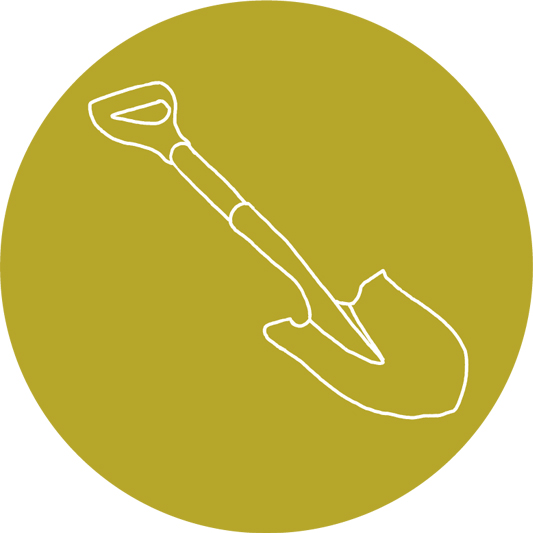
While composting can be an exact science, it certainly doesn’t need to be. After all, Mother Nature does composting all the time without the help of human effort. We can join her efforts without making it a big deal. Simply put, compost is plant food. It is light, nutrient-rich soil that you put in your garden or potted plants to make them grow better. Compost is the best of everything your plants need: Mulch, Plant food, Fungicide and Disease deterrent.
It is best to make your compost pile directly on the ground. The soil below will aid the decomposing process. You may also want to build a bin on any outdoor surface. Although it is best to compost over the raw ground, this option may not always be feasible. In such cases, you should put some finished compost in the bottom of the bin to initiate the decomposing process. Once you have decided on where you will keep the compost material, whether or not you want to contain it, you are ready to follow these steps.
Cowboys’ Secrets
➽ Burning cow dung: The smoke chases mosquitos away and the ash is rubbed on the skin as a mosquito repellent.
➽ Cow urine is used as a disinfectant on wounds and to bleach hair. When you cut your grass or rake up the leaves, put them in your compost pile. Toss twigs in there as well as this helps provide ventilation. After meals, collect table scraps in a bucket and when it is full, simply dump it over the yard scraps.
You will probably be eager to tend to your compost pile, so every week just go out and stab at it with your shovel. Every 2 - 3 weeks you can dig down and stir it up. This is important as it keeps the pile ventilated and avoids the build-up of mildew. That’s it!
This time next year, you will have plenty of complete compost (natural fertiliser) to use in your garden. You’ll be amazed at how happy your plants, vegetables and herbs are to have such rich and healthy soil.
*
Fabulous Four
Farming Tips by Francis Michael - Malakal, South Sudan
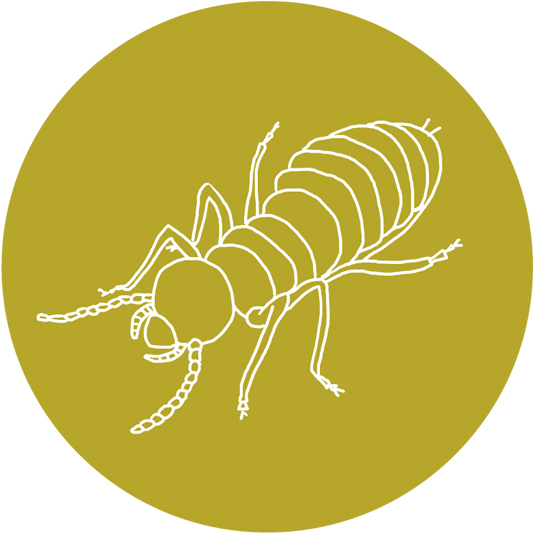
I. When seed time comes, cut down the trees in the area you want to cultivate. Leave the trees in the farm until the leaves fall. Then, take the branches away from the farm to incinerate them. With the onset of rainfall, termites eat the leaves, making a good soil fertiliser.
II. Use cow dung as fertiliser, adding it to the soil.
III. Mow grass and leave it on the farm to be eaten by termites, which also fertilises the soil.
IV. Leave the farm uncultivated for two to three years and then plant it.
*
Recipe: Gruel & Okra
by Rishan Oshi - Khartoum, Sudan
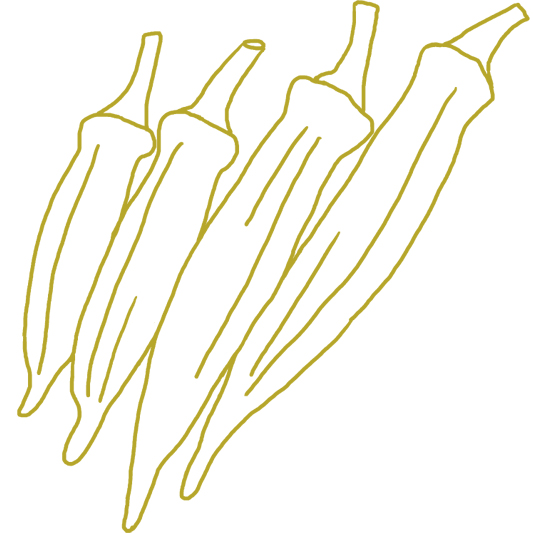
Gruel
Ingredients: Cornflour, Water
Preparations: Leave on a medium heat for fifteen minutes and stir continuously.
Okra with fried meat
Ingredients: Ground dried onion, Vegetable oil
Sauce: Ground dried meat, Water, Spices + salt, Ground dried okra
Preparations: Cook on a medium heat for fifteen minutes.
*
Recipe: Damaa
by Nosa Said Ahmed - Khartoum, Sudan
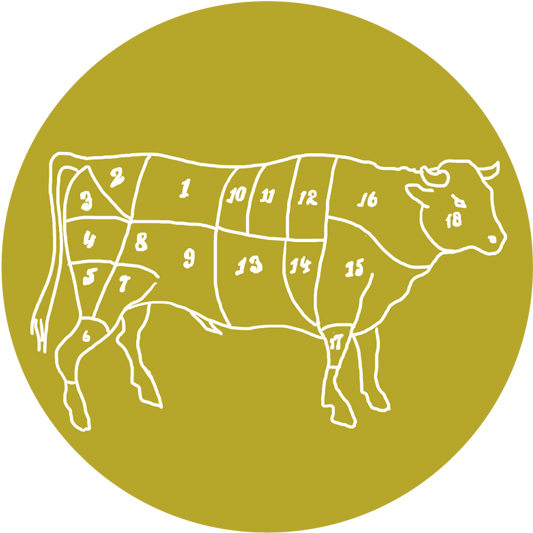
Damaa (‘teardrop’) is a famous Sudanese meal
Ingredients: Onion, Vegetable oil, Mutton or chicken meat, Tomato paste, Tomato sauce, Garlic, Chicken soup, Spices (by choice – salt, pepper are a must. You could also add cinnamon)
Instructions:
1. Cut the onion into small pieces and put it in a frying pan with vegetable oil until its colour becomes yellow. Then add one or two cups of water as needed. Cut the meat or chicken into small pieces and wash the pieces.
2. When the onion is well cooked and its texture is like a paste, add the meat or chicken then stir the mixture for one minute. Cover the pot and cook on a medium heat for five minutes.
How to make a solar cooker
No gas, no wood, no fire – no problem: Make your own solar panel cooker. Some can be built in about only one hour.
Find plans here:
http://solarcooking.org/planshttp://www.builditsolar.comhttp://www.solarcookers.org3. After that, add two tablespoons of tomato paste to one cup of water and mix well. Then add spices (salt and pepper) to the cup of paste. Add the cup of paste to the pot after you mixed it well and mix the ingredients at low heat then cover the pot for 15 minutes.
4. Open the pot and make sure that the mix has a thick consistency.5. To make sure that the meat is well cooked, take one piece of meat or chicken and rub it between your fingers to see how cooked it is.
6. If the meat or chicken takes longer to cook, open the pot and add half a cup of water, mix well and cover again for ten minutes.
7. Any type of vegetables can be added, thus making a ready-to-serve meal. Almost 60% of all Sudanese meals start with a dish of Damaa.
*
Tip:
How to make South Sudanese Salt
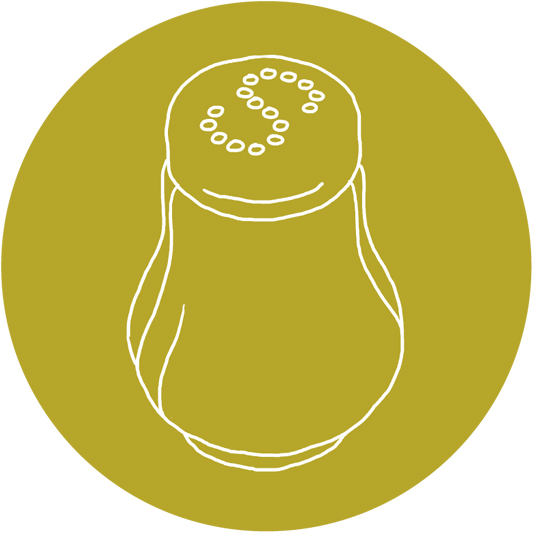
In the absence of salt, many South Sudanese produce their own salt from the ash of trees and leaves. It is commonly known as bicarbonate:
Some recipes may also require soda ash, usually as a reactive agent. Many recipes call for boiling lumps of dough in a soda ash mixture before baking in order to create a crispy outer shell or crust.
A number of prepared foods and beverages also contain sodium carbonate. It is commonly added to corn syrup as a sweetening agent. Soda ash can be used as an anti-caking agent, to help baked goods to rise, and to help control the acidity of some foods.
How does it work:
1. Fill a colander with ash
2. Hold it over a pot and pour water over the ash
3. Boil the water in a collecting pot until you have the Bicarbonate crystal.
*
Beauty-Box
Henna
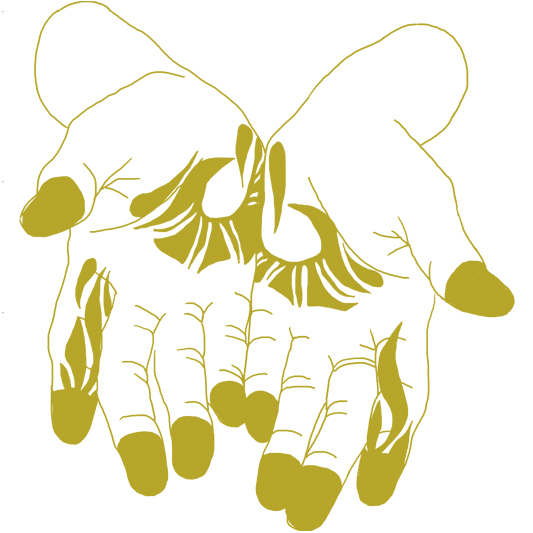
Using henna in Sudan is an age-old tradition, in fact henna art on feet and hands is one of the characteristics of Sudanese women. Henna is used to decorate hands, arms, feet and legs, but young men are now introducing henna art on the back and neck as well. Because Sudanese women are dark-skinned, they add dye to the henna to make its color black or they add mahlabiya oil which is a mixture of acidic oils. If the dye is not added, the henna turns red and you need to apply it a few times for it to turn dark brown.
Henna in Sudan is used by married women. When a woman is getting married, her legs are decorated with henna up to her knees and her hands are covered with elaborate henna designs until her elbows. Brides and young women usually choose flower patterns, older women choose geometrical shapes, they are bigger and less elaborate designs that don’t take as much time to make.
Important Sudanese medical plants
& how to use them:
Henna: Arthritis/rheumatism, dysentery, liver disorder, baldness, prickly heat and others. Tip to cure headaches caused by the sun: Make a plaster of Henna flowers soaked in vinegar and apply to forehead to relieve headaches.
Aniseed: Gastritis, heartburn, stomach ache, flatulence and others. Tips for lack of appetite: Aniseed stimulates the digestion. Make an infusion of a teaspoon of dried aniseed per cup of water. Drink two cups per day.
Fenugreek: Diabetes, cholesterol, asthma, bronchitis and others. Tip to cure stomach aliments: Brew tea made from Fenugreek seeds. When coated with water, the seeds produce a material that passes through the intestines, healing any lesions, and provides a protective shell for the ulcers. It also aids in digestion of food, helping maintain a good metabolism and preventing constipation.
Fennel: Kidney stones, quiet hiccups, nausea, gout and aids digestion.
Tip to make fennel water: Use 8 drops of oil to 1 pint of water – take up to 8 teaspoons per day.
Cumin: Diarrhea, colic, bowel spasms and others. Tip to cure bowel pains: Drink cumin tea. To make it, pour a cup of boiling water over 1 tablespoon of cumin.Almost all married women in Sudan, cover the bottom on their feet and their fingernails and the area around the fingernails in henna, often every week. This kind of henna is applied by women at home and although it is very simple, it speaks volumes about the woman’s marital status. Sudanese women try to avoid blank” hands to avoid gossip surrounding their happiness with their husbands or whether they were recently separated.
To prepare henna you need:
Four cups of henna and 1/2 cup of water
Preparations:
1. Mix the ingredients in a bowl with your hand for a few minutes to make a composed mixture (make sure it’s not a liquid paste)
2. Add a few drops of mahlabiya oil (if available and if you want to make the henna dark)
3. Cover the henna for three hours before use
4. Put henna in a small plastic bag and make a hole in the bag (a tiny hole if you want smaller and more elaborate patterns and a big hole if you want to cover your fingernails or the bottom of your feet).
Where to get henna? If you live in Sudan, all hairdressers offer henna designs. Also, there is always a famous henna lady in each neighbourhood. Ask the women living next to you and they will give you the henna lady’s number!
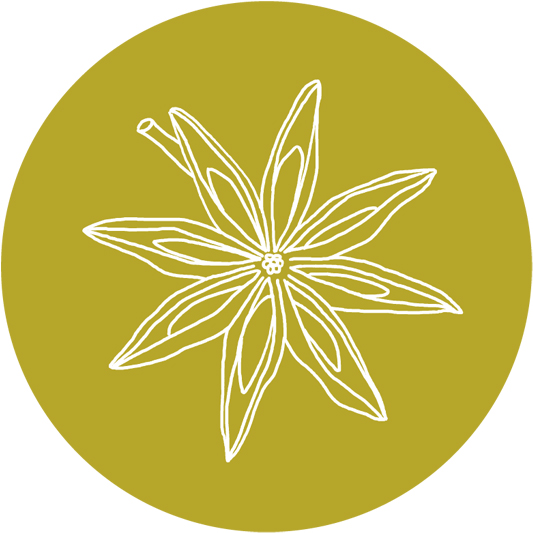
If you want the traditional henna (which covers the feet and hands and does not have any patterns) you will pay between 20 to 40 SDG at home or at a hairdresser. The more elaborate henna could be as reasonable as 70 SDG for both hands to over 500 SDG if you want the most elaborate henna usually done for brides and during celebrations.
If you are hoping to get difficult patterns, make sure you have at least three free hours because they take a long time to draw.
The best hairdressers for henna are: Paris Hairdresser, Located in Omdurman in front of Al-Azhari’s Roundabout. Located in Khartoum on Mashtal Road next to Saudi Supermarket. Al-Maleka Hairdresser, Located on Street 15 in Khartoum, across the street from Al-Hawy Supermarket.
